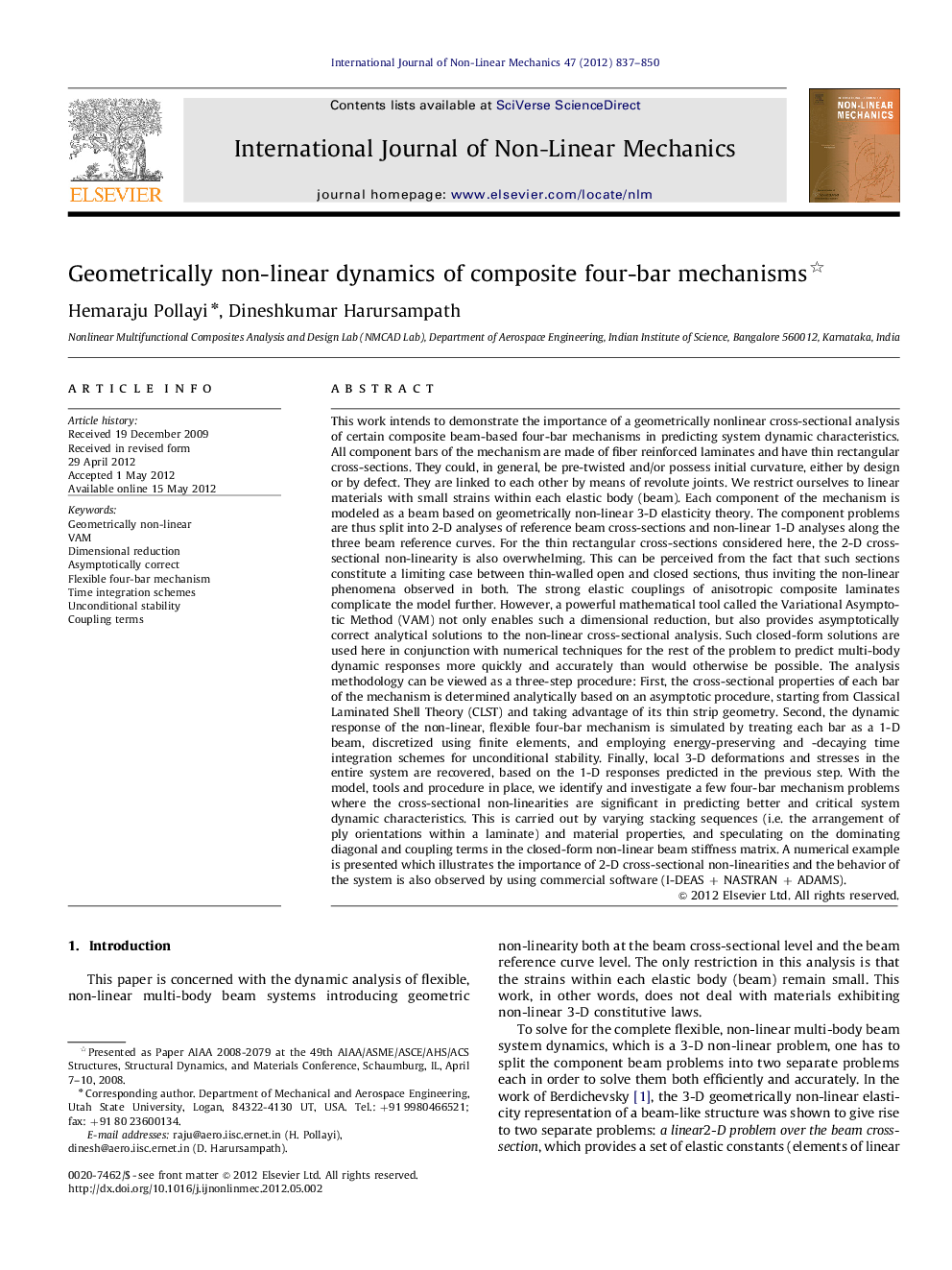| کد مقاله | کد نشریه | سال انتشار | مقاله انگلیسی | نسخه تمام متن |
|---|---|---|---|---|
| 787988 | 1465350 | 2012 | 14 صفحه PDF | دانلود رایگان |

This work intends to demonstrate the importance of a geometrically nonlinear cross-sectional analysis of certain composite beam-based four-bar mechanisms in predicting system dynamic characteristics. All component bars of the mechanism are made of fiber reinforced laminates and have thin rectangular cross-sections. They could, in general, be pre-twisted and/or possess initial curvature, either by design or by defect. They are linked to each other by means of revolute joints. We restrict ourselves to linear materials with small strains within each elastic body (beam). Each component of the mechanism is modeled as a beam based on geometrically non-linear 3-D elasticity theory. The component problems are thus split into 2-D analyses of reference beam cross-sections and non-linear 1-D analyses along the three beam reference curves. For the thin rectangular cross-sections considered here, the 2-D cross-sectional non-linearity is also overwhelming. This can be perceived from the fact that such sections constitute a limiting case between thin-walled open and closed sections, thus inviting the non-linear phenomena observed in both. The strong elastic couplings of anisotropic composite laminates complicate the model further. However, a powerful mathematical tool called the Variational Asymptotic Method (VAM) not only enables such a dimensional reduction, but also provides asymptotically correct analytical solutions to the non-linear cross-sectional analysis. Such closed-form solutions are used here in conjunction with numerical techniques for the rest of the problem to predict multi-body dynamic responses more quickly and accurately than would otherwise be possible. The analysis methodology can be viewed as a three-step procedure: First, the cross-sectional properties of each bar of the mechanism is determined analytically based on an asymptotic procedure, starting from Classical Laminated Shell Theory (CLST) and taking advantage of its thin strip geometry. Second, the dynamic response of the non-linear, flexible four-bar mechanism is simulated by treating each bar as a 1-D beam, discretized using finite elements, and employing energy-preserving and -decaying time integration schemes for unconditional stability. Finally, local 3-D deformations and stresses in the entire system are recovered, based on the 1-D responses predicted in the previous step. With the model, tools and procedure in place, we identify and investigate a few four-bar mechanism problems where the cross-sectional non-linearities are significant in predicting better and critical system dynamic characteristics. This is carried out by varying stacking sequences (i.e. the arrangement of ply orientations within a laminate) and material properties, and speculating on the dominating diagonal and coupling terms in the closed-form non-linear beam stiffness matrix. A numerical example is presented which illustrates the importance of 2-D cross-sectional non-linearities and the behavior of the system is also observed by using commercial software (I-DEAS + NASTRAN + ADAMS).
Journal: International Journal of Non-Linear Mechanics - Volume 47, Issue 8, October 2012, Pages 837–850